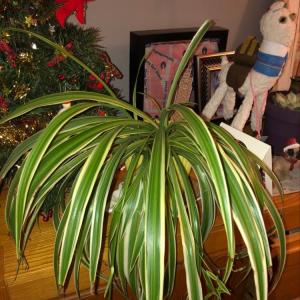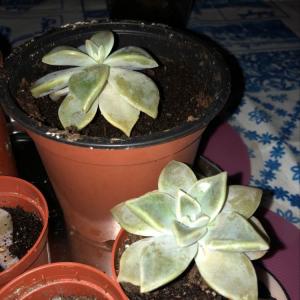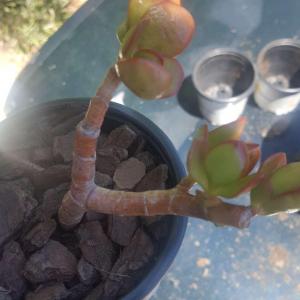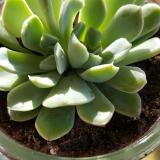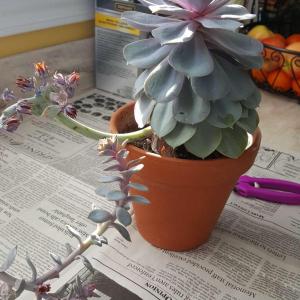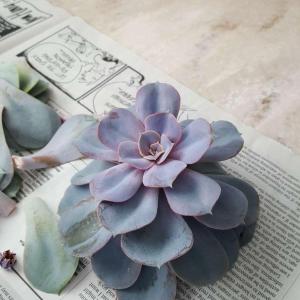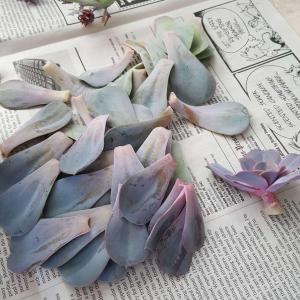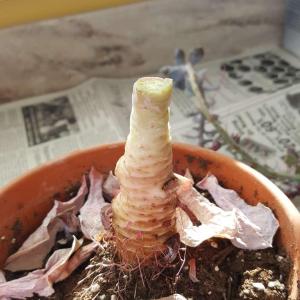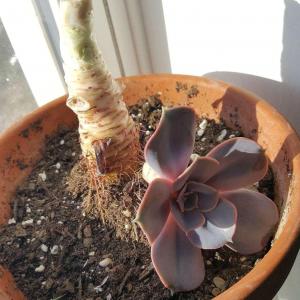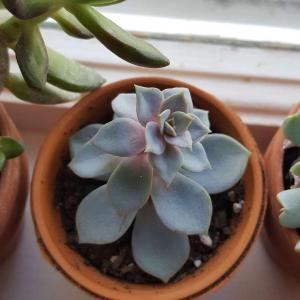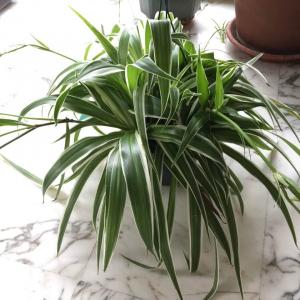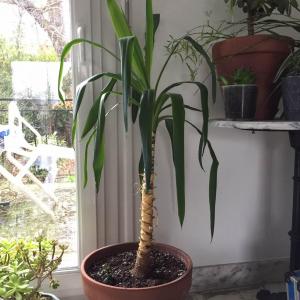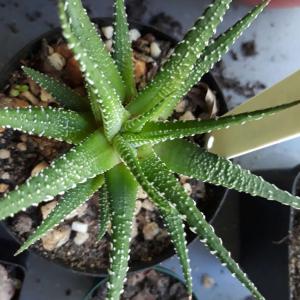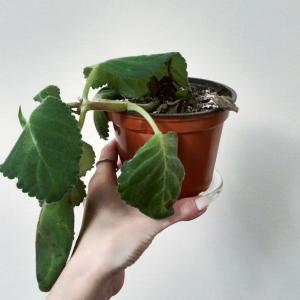文章
Miss Chen
2018年01月03日

Description: This perennial herbaceous plant is 1½–3½' tall, branching frequently in the upper half to create a bushy appearance. The slender stems are light green, glabrous, and terete (circular in cross-section). Along the entire length of these stems, there are abundant alternate leaves that become gradually smaller in size as they ascend. These leaves are 1½–4" long and 1.5–4 mm. (less than ¼") across; they are linear in shape, entire (toothless) along their margins, medium green, glabrous (hairless), and either sessile or short-petiolate. The leaves have prominent central veins, and some of the wider leaves have pairs of lateral veins that are also visible. The upper stems terminate in clusters of flowerheads that together form a collective inflorescence that is somewhat flat-headed or dome-shaped and irregular. Within this inflorescence, clusters of 3-7 flowerheads often occur that are sessile during the bud stage, although some of them develop short pedicels while they are in bloom. The branches of these floral clusters are similar to the stems, except they are more angular and occasionally short-hairy. Small leafy bracts up to 1" long occur where these branches divide; these bracts are linear in shape.
A mature flowerhead is about 3 mm. (1/8") across while in bloom, consisting of 10-12 ray florets and 4-7 disk florets. The petaloid rays of the flowerheads are short-oblong in shape, bright yellow, and ascending to widely spreading. The corollas of the disk florets are cylindrical in shape, 5-lobed, and bright yellow. At the base of each mature flowerhead, small phyllaries (floral bracts) occur in several overlapping series that are appressed together to form an involucre (a cup-shaped structure at the base of the flowerhead). For a mature flowerhead, this involucre is 4-6 mm. long and cylindrical in shape, tapering at its base. Individual phyllaries are elliptic-oblong in shape, light green to pale yellow, glabrous, and oily in appearance. The blooming period occurs from late summer to autumn, lasting about 1-2 months for a colony of plants. In the collective inflorescence of each plant, the flowerheads bloom gradually over a period of time, rather than all at once. Afterwards, the florets are replaced by achenes with small tufts of white hair; they are dispersed by the wind. These achenes are about 1 mm. long, bullet-shaped, and finely pubescent. The root system is fibrous and long-rhizomatous, often forming clonal colonies of plants.

Cultivation: The preference is full sun, moist to dry conditions, and sandy soil, although this plant readily adapts to other kinds of soil containing loam, clay, silt, or gravel. Cool rainy weather or excessive overhead watering can make the lower leaves vulnerable to rust. During an extended drought, some of the lower leaves may wither away, which is normal. Overall, this little-known plant is easy to cultivate in gardens – perhaps too easy, as it is able to spread aggressively by means of its long rhizomes in the average garden situation.
Range & Habitat: Plains Grass-leaved Goldenrod occurs occasionally throughout Illinois, but it is more common in the northern and western areas of the state (see Distribution Map). This plant is native to the state. The distribution map is from Jones & Fuller (1955), rather than the ILPIN database, because of some inaccuracies in the latter. Habitats include black soil prairies, sand prairies, gravel prairies, railroad prairies, meadows along rivers, rocky glades, roadsides, areas along railroads, and sandy fields. Plains Grass-leaved Goldenrod is more typical of areas to the west in the Great Plains, but it is still locally common in some parts of the state.

Faunal Associations: The nectar and pollen of the flowerheads attract an abundance of bees, wasps, flies, small butterflies, skippers, moths, beetles, plant bugs, and stink bugs. A plasterer bee, Colletes simulans armata, and such Andrenid bees as Andrena hirticincta, Andrena nubecula, and Andrena simplex, are specialist pollinators (oligoleges) of goldenrods, including Euthamia spp. The Goldenrod Soldier Beetle (Chauliognathus pennsylvanicus), in particular, is a common visitor of the flowerheads. Other insects feed on the foliage and other parts of Plains Grass-leaved Goldenrod. These species include a leaf beetle, Exema byersi, and such grasshoppers as the Western Grass-green Grasshopper (Hesperotettix speciosus), Meadow Purple-striped Grasshopper (Hesperotettix viridis), Keeler's Grasshopper (Melanoplus keeleri luridus), and Scudder's Short-winged Grasshopper (Melanoplus scudderi latus); see Clark et al. (2004) and Campbell et al. (1974). It is not uncommon to find various insects hiding within the dense leafy stems and clustered flowerheads during the day, including moths, caterpillars, and predatory insects; Ambush Bugs (Phymata spp.) are particularly common. The foliage of goldenrods is eaten occasionally by mammalian herbivores, particularly when it is young and more tender.
Photographic Location: The photographs were taken of plants growing in the webmaster's garden in Urbana, Illinois.

Comments: Different authorities don't agree on the distribution of Plains Grass-leaved Goldenrod (Euthamia gymnospermoides) within Illinois. For example, Mohenbrock (2002) and the ILPIN database restrict the distribution of this species to the northern and western areas of the state, while Jones & Fuller (1955) and A.G. Jones (1973) state that this species occurs in other areas of the state. In my experience, these latter authorities are correct, as I have encountered Plains Grass-leaved Goldenrod in some railroad prairies of east-central Illinois. It is easy to confuse this species with the more common Grass-leaved Goldenrod (Euthamia graminifolia). Plains Grass-leaved Goldenrod differs by having less than 20 florets per flowerhead (including both disk & ray florets), hairless stems, slightly more narrow leaves, and a more bushy appearance from densely branched stems. Grass-leaved Goldenrod, in contrast, has more than 20 florets per flowerhead, stems with lines of hair, slightly wider leaves, and a less branched appearance. Another species, Lake Grass-leaved Goldenrod (Euthamia remota), differs from Plains Grass-leaved Goldenrod by having slightly more slender leaves and shorter involucres (3-4 mm. long) on its mature flowerheads. Lake Grass-leaved Goldenrod probably should be reclassified as a disjunct population of Coastal Grass-leaved Goldenrod (Euthamia caroliniana); see efloras for more information.
A mature flowerhead is about 3 mm. (1/8") across while in bloom, consisting of 10-12 ray florets and 4-7 disk florets. The petaloid rays of the flowerheads are short-oblong in shape, bright yellow, and ascending to widely spreading. The corollas of the disk florets are cylindrical in shape, 5-lobed, and bright yellow. At the base of each mature flowerhead, small phyllaries (floral bracts) occur in several overlapping series that are appressed together to form an involucre (a cup-shaped structure at the base of the flowerhead). For a mature flowerhead, this involucre is 4-6 mm. long and cylindrical in shape, tapering at its base. Individual phyllaries are elliptic-oblong in shape, light green to pale yellow, glabrous, and oily in appearance. The blooming period occurs from late summer to autumn, lasting about 1-2 months for a colony of plants. In the collective inflorescence of each plant, the flowerheads bloom gradually over a period of time, rather than all at once. Afterwards, the florets are replaced by achenes with small tufts of white hair; they are dispersed by the wind. These achenes are about 1 mm. long, bullet-shaped, and finely pubescent. The root system is fibrous and long-rhizomatous, often forming clonal colonies of plants.

Cultivation: The preference is full sun, moist to dry conditions, and sandy soil, although this plant readily adapts to other kinds of soil containing loam, clay, silt, or gravel. Cool rainy weather or excessive overhead watering can make the lower leaves vulnerable to rust. During an extended drought, some of the lower leaves may wither away, which is normal. Overall, this little-known plant is easy to cultivate in gardens – perhaps too easy, as it is able to spread aggressively by means of its long rhizomes in the average garden situation.
Range & Habitat: Plains Grass-leaved Goldenrod occurs occasionally throughout Illinois, but it is more common in the northern and western areas of the state (see Distribution Map). This plant is native to the state. The distribution map is from Jones & Fuller (1955), rather than the ILPIN database, because of some inaccuracies in the latter. Habitats include black soil prairies, sand prairies, gravel prairies, railroad prairies, meadows along rivers, rocky glades, roadsides, areas along railroads, and sandy fields. Plains Grass-leaved Goldenrod is more typical of areas to the west in the Great Plains, but it is still locally common in some parts of the state.

Faunal Associations: The nectar and pollen of the flowerheads attract an abundance of bees, wasps, flies, small butterflies, skippers, moths, beetles, plant bugs, and stink bugs. A plasterer bee, Colletes simulans armata, and such Andrenid bees as Andrena hirticincta, Andrena nubecula, and Andrena simplex, are specialist pollinators (oligoleges) of goldenrods, including Euthamia spp. The Goldenrod Soldier Beetle (Chauliognathus pennsylvanicus), in particular, is a common visitor of the flowerheads. Other insects feed on the foliage and other parts of Plains Grass-leaved Goldenrod. These species include a leaf beetle, Exema byersi, and such grasshoppers as the Western Grass-green Grasshopper (Hesperotettix speciosus), Meadow Purple-striped Grasshopper (Hesperotettix viridis), Keeler's Grasshopper (Melanoplus keeleri luridus), and Scudder's Short-winged Grasshopper (Melanoplus scudderi latus); see Clark et al. (2004) and Campbell et al. (1974). It is not uncommon to find various insects hiding within the dense leafy stems and clustered flowerheads during the day, including moths, caterpillars, and predatory insects; Ambush Bugs (Phymata spp.) are particularly common. The foliage of goldenrods is eaten occasionally by mammalian herbivores, particularly when it is young and more tender.
Photographic Location: The photographs were taken of plants growing in the webmaster's garden in Urbana, Illinois.

Comments: Different authorities don't agree on the distribution of Plains Grass-leaved Goldenrod (Euthamia gymnospermoides) within Illinois. For example, Mohenbrock (2002) and the ILPIN database restrict the distribution of this species to the northern and western areas of the state, while Jones & Fuller (1955) and A.G. Jones (1973) state that this species occurs in other areas of the state. In my experience, these latter authorities are correct, as I have encountered Plains Grass-leaved Goldenrod in some railroad prairies of east-central Illinois. It is easy to confuse this species with the more common Grass-leaved Goldenrod (Euthamia graminifolia). Plains Grass-leaved Goldenrod differs by having less than 20 florets per flowerhead (including both disk & ray florets), hairless stems, slightly more narrow leaves, and a more bushy appearance from densely branched stems. Grass-leaved Goldenrod, in contrast, has more than 20 florets per flowerhead, stems with lines of hair, slightly wider leaves, and a less branched appearance. Another species, Lake Grass-leaved Goldenrod (Euthamia remota), differs from Plains Grass-leaved Goldenrod by having slightly more slender leaves and shorter involucres (3-4 mm. long) on its mature flowerheads. Lake Grass-leaved Goldenrod probably should be reclassified as a disjunct population of Coastal Grass-leaved Goldenrod (Euthamia caroliniana); see efloras for more information.
0
0
文章
Miss Chen
2018年01月03日

Description: This herbaceous perennial plant is 2-3½' tall. Sometimes it is slender and little branched, while at other times it branches frequently, creating a bushy appearance. The slender stems usually have lines of fine white hairs. The alternate leaves are linear and have smooth margins. The larger leaves have 3 conspicuous veins, although the smaller ones usually have only a single conspicuous vein. They are up to 4" long and 3/8" across, or slightly wider. Sometimes there are a few white hairs near the base of the leaves and along the central vein on the underside. There are clusters of small composite flowers at the apex of the plant and many of the upper side stems. These flower clusters are usually rather flat-headed, but they sometimes assume a round-headed appearance. Each composite flower is yellow, consisting of about 21-35 disk florets and ray florets (when considered together). It is only about 1/8" across – smaller than the composite flowers of other goldenrods.
These compound flowers often bloom gradually, rather than simultaneously, with older flowers turning brown while younger flowers are still in the bud stage. The blooming period is late summer to early fall, and lasts about 1 month. Sometimes there is a mild floral scent. The root system is fibrous, and new plants develop vegetatively from rhizomes. Overall, Grass-Leaved Goldenrod is rather variable across different localities.
Cultivation: The preference is full sun and moist conditions. However, this plant tolerates drier conditions, and can be surprisingly drought tolerant. The soil should contain high amounts of organic matter; some varieties of this plant also grow in moist sandy soil. Powdery mildew seems to bother this goldenrod less often than many others. It is easy to grow, but can spread aggressively in moist sunny places.

Range & Habitat: Grass-Leaved Goldenrod occurs occasionally in most counties of Illinois (see Distribution Map), where this plant is native. However, it can be locally common in some wetlands areas. Habitats include moist black soil prairies, edges of marshes, sandy pannes between dunes, calcareous seeps, borders of lakes, abandoned fields, and ditches along railroads. Grass-Leaved Goldenrod occasionally occurs in drier habitats, but it has greater trouble competing with other forbs, such as Solidago canadensis (Canada Goldenrod), in such places.
Faunal Associations: The small flowers attract many kinds of insects, including long-tongued bees, short-tongued bees, wasps, flies, butterflies, moths, and beetles. Various wasps and a few beetle species, such as Chauliognathus pennsylvanicus (Goldenrod Soldier Beetle) and Epicauta pensylvanica (Black Blister Beetle), seem to be especially attracted to the flowers. The caterpillars of several species of moths eat various parts of this and other goldenrods (see Moth Table). The seeds are eaten by the Eastern Goldfinch and Swamp Sparrow to a limited extent, while the foliage is occasionally consumed in limited amounts by the Greater Prairie Chicken, Cottontail Rabbit, and White-Tailed Deer.

Photographic Location: The photographs were taken at Meadowbrook Park in Urbana, Illinois.
Comments: Grass-Leaved Goldenrod has more slender leaves than other goldenrods in Illinois, except for Euthamia gymnospermoides (Plains Grass-Leaved Goldenrod). However, there is only a single conspicuous vein in the largest leaves of this latter species, its stems are hairless, it has only 12-20 disk and ray florets in a compound flower (when considered together), and it is usually more branched and bushy in appearance. Grass-Leaved Goldenrod also differs from the latter species by preferring more soggy habitats.
These compound flowers often bloom gradually, rather than simultaneously, with older flowers turning brown while younger flowers are still in the bud stage. The blooming period is late summer to early fall, and lasts about 1 month. Sometimes there is a mild floral scent. The root system is fibrous, and new plants develop vegetatively from rhizomes. Overall, Grass-Leaved Goldenrod is rather variable across different localities.
Cultivation: The preference is full sun and moist conditions. However, this plant tolerates drier conditions, and can be surprisingly drought tolerant. The soil should contain high amounts of organic matter; some varieties of this plant also grow in moist sandy soil. Powdery mildew seems to bother this goldenrod less often than many others. It is easy to grow, but can spread aggressively in moist sunny places.

Range & Habitat: Grass-Leaved Goldenrod occurs occasionally in most counties of Illinois (see Distribution Map), where this plant is native. However, it can be locally common in some wetlands areas. Habitats include moist black soil prairies, edges of marshes, sandy pannes between dunes, calcareous seeps, borders of lakes, abandoned fields, and ditches along railroads. Grass-Leaved Goldenrod occasionally occurs in drier habitats, but it has greater trouble competing with other forbs, such as Solidago canadensis (Canada Goldenrod), in such places.
Faunal Associations: The small flowers attract many kinds of insects, including long-tongued bees, short-tongued bees, wasps, flies, butterflies, moths, and beetles. Various wasps and a few beetle species, such as Chauliognathus pennsylvanicus (Goldenrod Soldier Beetle) and Epicauta pensylvanica (Black Blister Beetle), seem to be especially attracted to the flowers. The caterpillars of several species of moths eat various parts of this and other goldenrods (see Moth Table). The seeds are eaten by the Eastern Goldfinch and Swamp Sparrow to a limited extent, while the foliage is occasionally consumed in limited amounts by the Greater Prairie Chicken, Cottontail Rabbit, and White-Tailed Deer.

Photographic Location: The photographs were taken at Meadowbrook Park in Urbana, Illinois.
Comments: Grass-Leaved Goldenrod has more slender leaves than other goldenrods in Illinois, except for Euthamia gymnospermoides (Plains Grass-Leaved Goldenrod). However, there is only a single conspicuous vein in the largest leaves of this latter species, its stems are hairless, it has only 12-20 disk and ray florets in a compound flower (when considered together), and it is usually more branched and bushy in appearance. Grass-Leaved Goldenrod also differs from the latter species by preferring more soggy habitats.
0
0
求助
pernillamonstrera
2018年01月02日

How do I care for this plant? It is dying on me 😭 thankful for help!
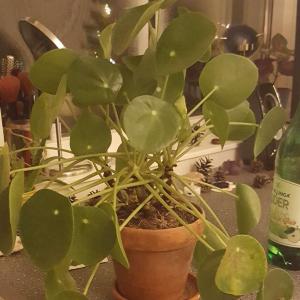

1
0
BOHN_L:Well I choose to ignore it... I have one in my balcony, water it very week and stays in full sunshine. It goes very well. Even in the winter. I guess ureneed more sunshine...
成长记
Kiersten_27
2017年12月31日

I now added "Aphalandra squarrosa (zebra plant)" in my "garden"
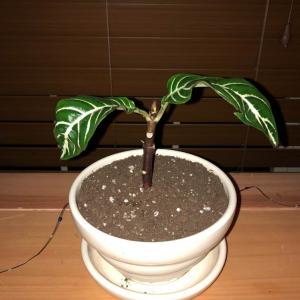

2
0
Mohamad.hamidizade:So very good
Kiersten_27:@Mohamad.hamidizade That picture was taken at night, I had just gotten it home from Home Depot, and the blinds get opened every day
Mohamad.hamidizade:Need light 👍🏼
求助
Viny
2017年12月31日
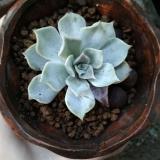
Anyone know what is this plant name?
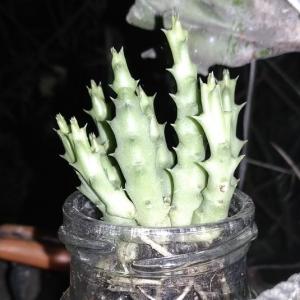

1
1
meriunkat:or it can be Caroluma Crenolata
meriunkat:looks like Huernia Zebrina "Lifesaver plant"
求助
Thiri Shwesin
2017年12月30日

does anybody know this plant specimen? pls let me know....
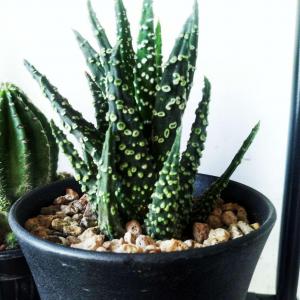

0
0
stunning.succulents:haworthia fasciata?
Kiersten_27:It’s a haworthia, I’m not sure if the exact species, but it looks similar to haworthia pumila
文章
Miss Chen
2017年12月26日

Description: This herbaceous perennial plant is ½–3' tall, producing one or more stems that are unbranched, except at their apices, where the inflorescences occur. Each stem is light green, terete, glabrous, and sometimes glaucous (rarely it is pubescent). Alternate leaves occur along the entire length of each stem, except at the apex underneath an inflorescence, where the uppermost leaves occur in a whorl of 3 or more. They are widely spreading to ascending. Individual leaves are up to 2½" long and ½" across; they are linear-oblong to oblong in shape and their margins are entire (toothless). The tips of these leaves are blunt, while their bases are sessile or nearly so. The upper and lower leaf surfaces are light gray-green to medium green and glabrous (rarely the lower leaf surface is pubescent). Leaf venation is pinnate with prominent central veins. The foliage of this plant contains a toxic white latex.
Each mature stem terminates in a panicle of flowers up to ¾' long and 1' across. This panicle is somewhat flat-headed and it has an open airy appearance. Individual flowers span about ¼" across (including their petaloid bracts). Each flower has a tiny cup-like cyathium containing the reproductive organs, 5 white petaloid bracts, and 5 green glandular appendages at the bases of these bracts. Because Flowering Spurge is monoecious, separate male (staminate) and female (pistillate) flowers are produced on the same plant. Each male flower has several stamens, while each female flower has an ovary with a tripartite style. The petaloid bracts are obovate in shape; sometimes they are slightly notched at their tips. The branches and pedicels of the inflorescence are light green, glabrous, and terete; pairs of small leafy bracts up to ½" long occur at the bases of pedicels and where the branches divide. The blooming period occurs from early summer to early autumn, lasting about 1-2 months for a colony of plants. There is no floral fragrance. During this time, an entire plant may lean to one side because of the weight of its inflorescence. Afterwards, the female flowers are replaced by 3-celled capsules of seeds that are 3-4 mm. long, globoid, and 3-lobed in shape; there is one seed for each cell of a capsule. At maturity, these capsules split open to eject their seeds. The seeds are 2-3 mm. long, ovoid-obovoid in shape, and finely mottled. The root system consists of a taproot that becomes woody with age.

Cultivation: The preference is full sun and mesic to dry conditions. This plant will tolerate almost any kind of soil, including those that contain loam, clay, sand, gravel, or rocky material. Poor soil is actually preferred because of the reduction in competition from other plants. Drought resistance is excellent and disease is rarely a problem when the soil is well-drained.
Range & Habitat: The native Flowering Spurge occurs in every county of Illinois (see Distribution Map), where it is common. Habitats include black soil prairies, clay prairies, sand prairies, gravel prairies, dolomite prairies, various kinds of hill prairies, openings in rocky upland woodlands, opening in sandy upland woodlands, typical savannas and sandy savannas, thinly wooded bluffs, limestone glades, stabilized sand dunes, roadsides, areas along railroads, mined land, and agricultural land in various stages of abandonment or neglect. Flowering Spurge can be found in either disturbed areas or high quality natural areas.
Faunal Associations: The pollen and nectar of the flowers attract Halictid bees, masked bees (Hylaeus spp.), Crabronid wasps (Oxybelus spp. & others), paper wasps (Polistes spp.), the Five-banded Tiphiid Wasp (Myzinum quinquecinctum), Sphecid wasps, cuckoo wasps (Chrysididae), Syrphid flies, bee flies (Exoprosopa spp. & others), Tachinid flies, flesh flies (Sarcophagidae), Muscid flies, and small butterflies, including the endangered Karner Blue (Lycaeides melissa samulelis); see Robertson (1929) and others. Other insects feed on the sap, foliage, and other parts of Flowering Spurge. These species include the Euphorbia Bug (Chariesterus antennator), a flea beetle (Glyptina bicolor), and a monophagous aphid (Aphis pulchella); see Vestal (1913), Clark et al. (2004), and Hottes & Frison (1931). The polyphagous Potato Aphid (Macrosiphum euphorbiae) also feeds on spurges (Euphorbia spp.). The seeds are an attractive source of food to some birds, including the Wild Turkey, Greater Prairie Chicken, Bobwhite Quail, Mourning Dove, and Horned Lark (Martin et al., 1951/1961). Flowering Spurge is rarely eaten by mammalian herbivores because of the toxic white latex in its foliage.
Photographic Location: A remnant prairie along an abandoned railroad in Urbana, Illinois.
Comments: The typical variety of Flowering Spurge (Euphorbia corollata) has glabrous foliage, but there is an uncommon variety of this plant (var. mollis) with pubescent stems and pubescent leaf undersides. While the foliage is normally some shade of green, during the autumn it often becomes an attractive reddish color. For a species of the Spurge family (Euphorbiaceae), Flowering Spurge is more showy than most because of its relatively large inflorescence and the white petaloid bracts of its flowers. The flowers of most spurges in Illinois, whether native or naturalized, have either green to yellowish green floral bracts, or their floral bracts are tiny and easily overlooked.
Each mature stem terminates in a panicle of flowers up to ¾' long and 1' across. This panicle is somewhat flat-headed and it has an open airy appearance. Individual flowers span about ¼" across (including their petaloid bracts). Each flower has a tiny cup-like cyathium containing the reproductive organs, 5 white petaloid bracts, and 5 green glandular appendages at the bases of these bracts. Because Flowering Spurge is monoecious, separate male (staminate) and female (pistillate) flowers are produced on the same plant. Each male flower has several stamens, while each female flower has an ovary with a tripartite style. The petaloid bracts are obovate in shape; sometimes they are slightly notched at their tips. The branches and pedicels of the inflorescence are light green, glabrous, and terete; pairs of small leafy bracts up to ½" long occur at the bases of pedicels and where the branches divide. The blooming period occurs from early summer to early autumn, lasting about 1-2 months for a colony of plants. There is no floral fragrance. During this time, an entire plant may lean to one side because of the weight of its inflorescence. Afterwards, the female flowers are replaced by 3-celled capsules of seeds that are 3-4 mm. long, globoid, and 3-lobed in shape; there is one seed for each cell of a capsule. At maturity, these capsules split open to eject their seeds. The seeds are 2-3 mm. long, ovoid-obovoid in shape, and finely mottled. The root system consists of a taproot that becomes woody with age.

Cultivation: The preference is full sun and mesic to dry conditions. This plant will tolerate almost any kind of soil, including those that contain loam, clay, sand, gravel, or rocky material. Poor soil is actually preferred because of the reduction in competition from other plants. Drought resistance is excellent and disease is rarely a problem when the soil is well-drained.
Range & Habitat: The native Flowering Spurge occurs in every county of Illinois (see Distribution Map), where it is common. Habitats include black soil prairies, clay prairies, sand prairies, gravel prairies, dolomite prairies, various kinds of hill prairies, openings in rocky upland woodlands, opening in sandy upland woodlands, typical savannas and sandy savannas, thinly wooded bluffs, limestone glades, stabilized sand dunes, roadsides, areas along railroads, mined land, and agricultural land in various stages of abandonment or neglect. Flowering Spurge can be found in either disturbed areas or high quality natural areas.
Faunal Associations: The pollen and nectar of the flowers attract Halictid bees, masked bees (Hylaeus spp.), Crabronid wasps (Oxybelus spp. & others), paper wasps (Polistes spp.), the Five-banded Tiphiid Wasp (Myzinum quinquecinctum), Sphecid wasps, cuckoo wasps (Chrysididae), Syrphid flies, bee flies (Exoprosopa spp. & others), Tachinid flies, flesh flies (Sarcophagidae), Muscid flies, and small butterflies, including the endangered Karner Blue (Lycaeides melissa samulelis); see Robertson (1929) and others. Other insects feed on the sap, foliage, and other parts of Flowering Spurge. These species include the Euphorbia Bug (Chariesterus antennator), a flea beetle (Glyptina bicolor), and a monophagous aphid (Aphis pulchella); see Vestal (1913), Clark et al. (2004), and Hottes & Frison (1931). The polyphagous Potato Aphid (Macrosiphum euphorbiae) also feeds on spurges (Euphorbia spp.). The seeds are an attractive source of food to some birds, including the Wild Turkey, Greater Prairie Chicken, Bobwhite Quail, Mourning Dove, and Horned Lark (Martin et al., 1951/1961). Flowering Spurge is rarely eaten by mammalian herbivores because of the toxic white latex in its foliage.
Photographic Location: A remnant prairie along an abandoned railroad in Urbana, Illinois.
Comments: The typical variety of Flowering Spurge (Euphorbia corollata) has glabrous foliage, but there is an uncommon variety of this plant (var. mollis) with pubescent stems and pubescent leaf undersides. While the foliage is normally some shade of green, during the autumn it often becomes an attractive reddish color. For a species of the Spurge family (Euphorbiaceae), Flowering Spurge is more showy than most because of its relatively large inflorescence and the white petaloid bracts of its flowers. The flowers of most spurges in Illinois, whether native or naturalized, have either green to yellowish green floral bracts, or their floral bracts are tiny and easily overlooked.
0
0



